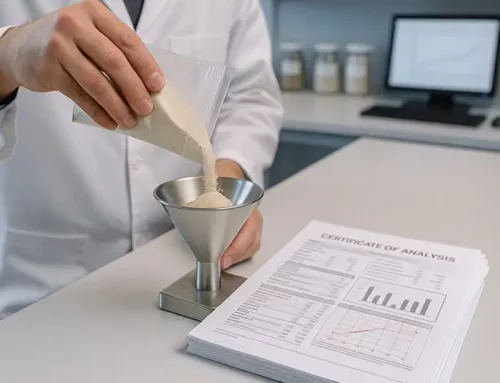Moisture content analysis in powders is a critical aspect of quality control and product development across various industries, including pharmaceuticals, food, and chemicals. The presence of moisture can significantly impact the physical properties, stability, and shelf life of powdered products. Consequently, accurate determination and control of moisture levels are essential. Here, we outline the best practices for moisture content analysis in powders, focusing on techniques, equipment, and procedural considerations.
1. Choosing the Right Method
Several methods are available for determining moisture content in powders, each with its advantages and limitations. The selection of an appropriate method depends on the nature of the powder, the required precision, and the equipment availability. Common methods include:
- Gravimetric Analysis: The most traditional and widely used method involves drying the sample at a specific temperature and measuring the weight loss. This method is simple and reliable but can be time-consuming and may not be suitable for thermolabile substances.
- Karl Fischer Titration: This chemical method is highly accurate and specific for water content. It is particularly useful for low moisture levels and materials sensitive to heat.
- Loss on Drying (LOD): A variant of gravimetric analysis, LOD involves heating the sample in an oven and measuring the weight loss. This method is less precise than Karl Fischer Titration but is easier and faster.
- Near-Infrared (NIR) Spectroscopy: NIR is a non-destructive method that provides rapid moisture analysis. It is suitable for continuous monitoring in production but requires calibration against a primary method.
2. Sample Preparation
Proper sample preparation is crucial for accurate moisture content determination. Key considerations include:
- Homogeneity: Ensure the sample is well-mixed and representative of the bulk material. Inhomogeneous samples can lead to inaccurate results.
- Sample Size: Use an adequate sample size to minimize errors. The size should be consistent with the method’s requirements and sensitivity.
- Handling and Storage: Minimize exposure to ambient humidity by handling samples quickly and storing them in airtight containers. This is particularly important for hygroscopic powders that readily absorb moisture from the environment.
3. Equipment Calibration and Maintenance
Regular calibration and maintenance of analytical instruments are essential to ensure accurate and reliable results. This includes:
- Calibration: Calibrate balances, ovens, and titrators according to manufacturer specifications and industry standards. For Karl Fischer titration, use certified reference materials to calibrate the instrument.
- Maintenance: Regularly clean and inspect equipment to prevent contamination and mechanical issues. Replace worn-out parts and consumables, such as electrodes in Karl Fischer titrators, to maintain performance.
4. Standard Operating Procedures (SOPs)
Developing and adhering to detailed SOPs is critical for consistency and reproducibility. SOPs should outline:
- Method Selection and Justification: Specify the chosen method and rationale for its selection.
- Sample Collection and Preparation: Describe the procedures for sampling, homogenization, and storage.
- Analytical Procedure: Provide step-by-step instructions for conducting the analysis, including temperature settings, sample sizes, and measurement intervals.
- Data Recording and Analysis: Detail the procedures for data recording, calculations, and reporting. Include criteria for accepting or rejecting results.
5. Quality Assurance and Control
Implementing a robust quality assurance and control system is vital for ensuring the accuracy and precision of moisture content measurements. This includes:
- Validation: Validate the analytical method to confirm its suitability for the specific powder type and intended use.
- Internal Controls: Use control samples with known moisture content to monitor the accuracy of routine analyses.
- Interlaboratory Comparisons: Participate in interlaboratory studies to benchmark performance and identify areas for improvement.
Conclusion
Moisture content analysis in powders is a vital component of quality control and product stability. By selecting the appropriate analytical method, ensuring proper sample handling, maintaining equipment, following SOPs, and implementing a quality assurance program, accurate and reliable moisture content determination can be achieved. These best practices help prevent product failures, ensure compliance with industry standards, and maintain customer satisfaction.




